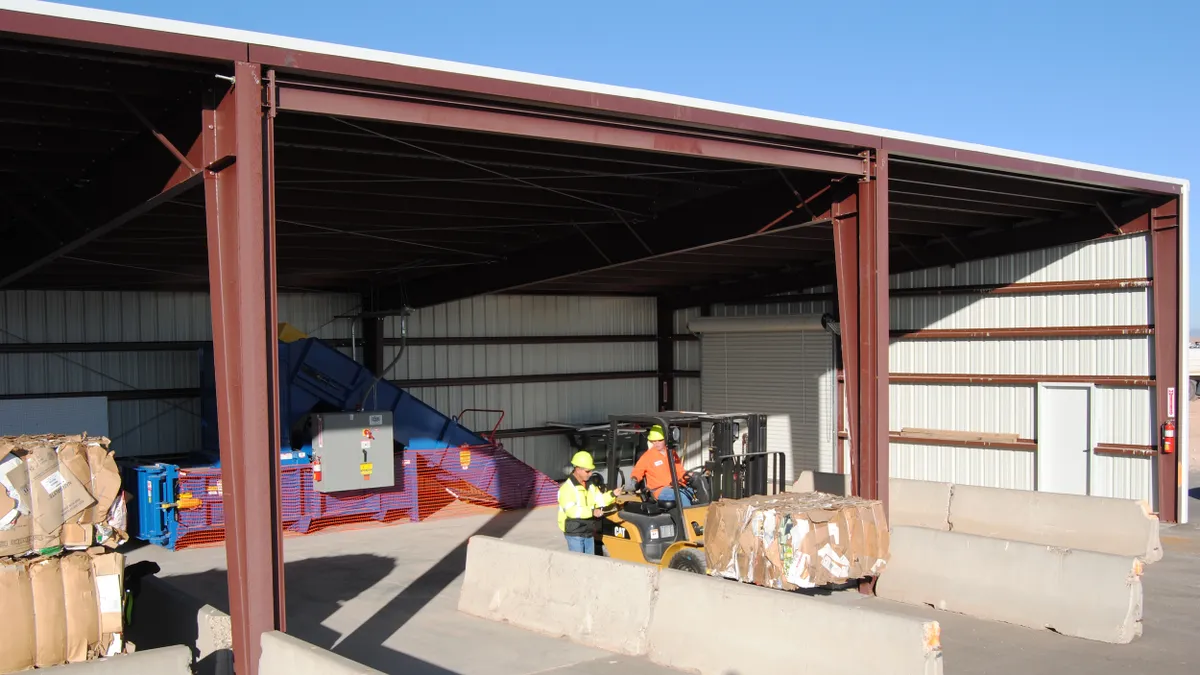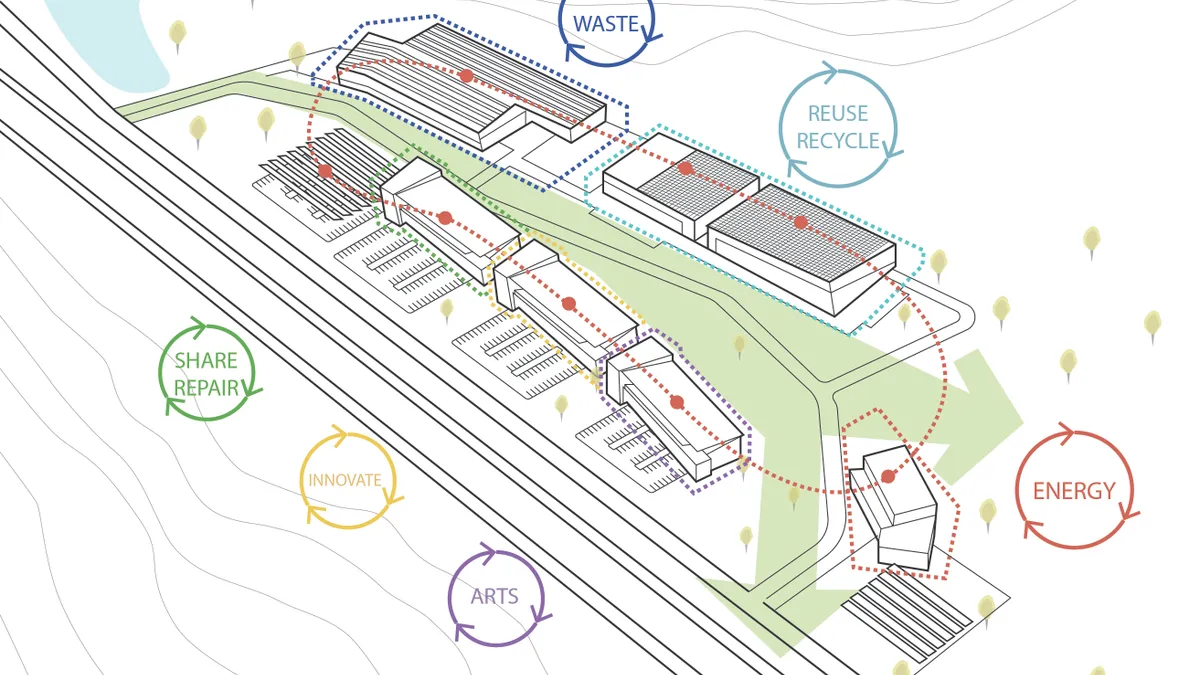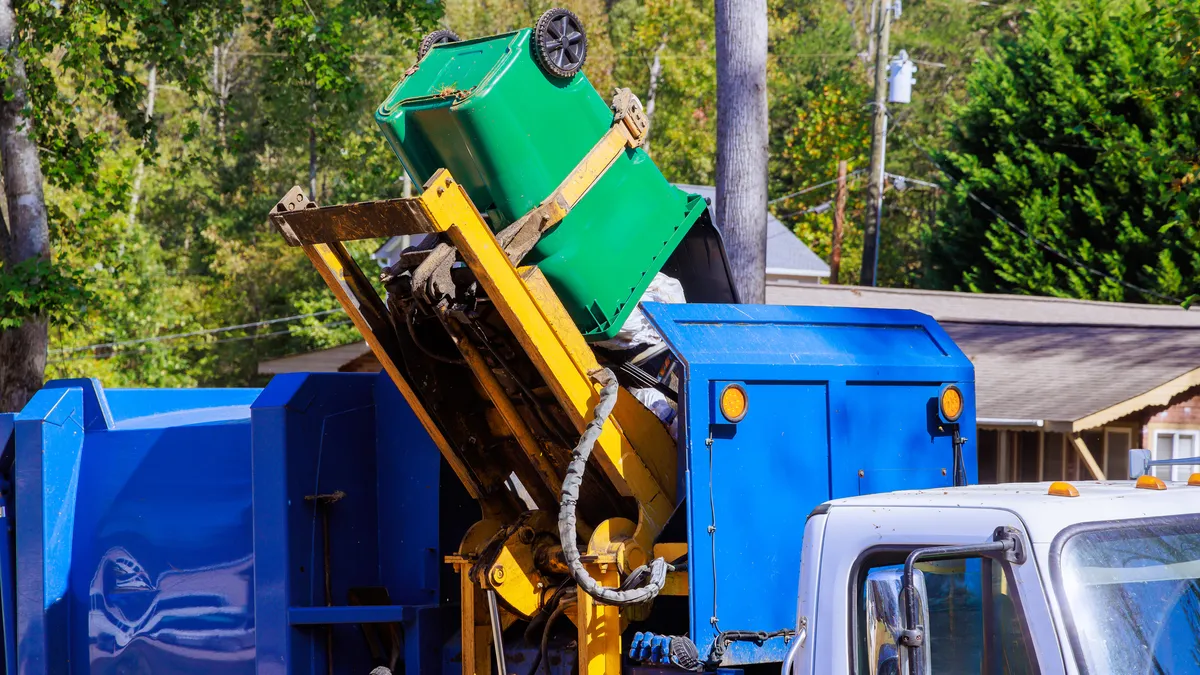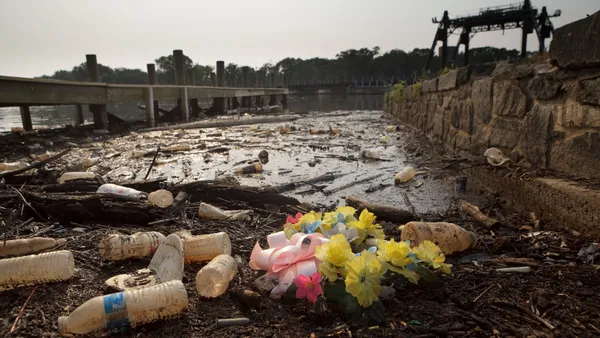Millions of families across the country are celebrating the Halloween season, which means millions of pumpkins are being bought, carved, displayed and then tossed in the trash — 1.3 billion pounds of pumpkins, to be exact. In addition to this pumpkin waste, the average amount of food that is also sent to the landfill on a daily basis can be seen as, well, spooky.
Many consumers and industry professionals who are aware of this food waste problem are in-tune to the common statistics: 40% of food in the U.S. is wasted annually and 1.3 billion tons of food is wasted on a global level every year. Yet outside of these statistics, there are also scary truths to the amount of water wasted with food waste, the amount of carbon dioxide that the waste emits and other factors to the problem.
Waste Dive rounded up five of the most frightening food waste facts that will make anyone rethink tossing this year's Halloween candy in the trash.
1. The volume of water used to grow food that is wasted is equivalent to the annual flow of Europe's longest river
According to a report from the Food and Agriculture Organization of the United Nations (FAO), the amount of water that is used to grow or process food that is eventually tossed in the trash is equal to the annual flow of Russia's Volga River, the longest in Europe. And it isn't just produce that accounts for this waste. According to Smithsonian, the water footprint of beef adds up to 1,800 gallons per pound, while a chicken’s water footprint is about 519 gallons per pound.
Food Foolish, a book written by John M. Mandyck and Eric B. Schultz, gives a closer look at this issue of wasted water. According to the authors, "the global freshwater loss related to food waste is higher than the national water usage of any country." In a world where a lack of freshwater is one of the most threatening issues facing the human population, this is a grave loss to consider when examining food waste.
2. If food waste was a country, it would be the 3rd largest emitter of carbon dioxide in the world (behind China and the US)
The same FAO report also estimates that the annual carbon footprint of wasted food is equivalent to 3.3 billion tons of carbon dioxide, largely attributed to cereals (34%), meat (21%) and vegetables (21%). FAO reports "the production and application of nitrogen fertilizer are major contributors to the overall climate impact of cereals," while meat emissions are affected by feed provisions and greenhouses have a large impact on the emissions of produce.
These GHG emissions make food waste the third largest emitter of carbon dioxide behind China (1) and the U.S. (2). The numbers also indicate the importance for gas-capturing technologies at landfills to mitigate the amount of methane that this waste produces as it breaks down.
3. An estimated 1 in every 7 truckloads of perishables delivered to supermarkets is thrown away
Food waste is equivalent to nearly 10% of the total food supply at the retail level, according to a report from the Natural Resources Defense Council (NRDC). NRDC notes that, according to estimates from an industry consultant, one in seven truckloads of perishables delivered to supermarkets is thrown away due to overstock of product, aesthetic reasoning, expired "sell by" dates and items simply being unpopular.
Some retailers like Wal-Mart and Whole Foods are being called on to eliminate the stigma of "ugly produce" and actively make efforts to reduce food waste. Companies like Hungry Harvest and Spoiler Alert are also building businesses around educating consumers about food waste-related myths, while nonprofits like Feedback and even the Ad Council are encouraging retailers and stakeholders to donate food and reconsider date labels.
4. If 1/4 of global food waste was recovered, it would be enough to feed 870 million hungry people
Feeding America has reported that, in 2015, 42.2 million Americans lived in food insecure households. On an even broader scope, about 795 million people around the world do not have enough food, amounting to 12.9% of the global population being undernourished. However the FAO notes that if even a quarter of food waste were to be recovered or donated, it would be enough to feed 870 million people, which would theoretically put an end to global hunger.
Mitigating food waste to reduce hunger would not only be a benefit to the humans who lack nutrition, but also to the global GDP. According to Food Foolish, a Bank of America Merrill Lynch study concluded that "huger and undernutrition reduce the global GDP by nearly 3%, or $2 trillion annually." By combating hunger with food waste recovery, there is hope that entire economies of countries around the globe could be improved.
5. A recent survey indicated 53% of consumers know food waste is a problem, but they're not willing to change their behaviors
A study published in the scientific journal Plos One found that, out of 500 survey respondents, 53% are aware food waste is a problem but are unwilling to change their behaviors. On top of that statistic, 77% of respondents said they felt guilty about food waste, yet 24% said they were too busy to worry about it.
This lack of consumer buy-in is only fueling the food waste problem further, and outside of consumer education, the industry is struggling to figure out what more can be done. Part of this consumer-driven waste is heightened by confusion surrounding date labels and, until such labels are better regulated, it is assumed that consumers will continue to throw away mass amounts of edible food.





















